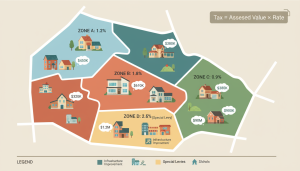What is an adjustment statement for closing?
Is this adjustment statement about to cost you thousands at closing? Read this and protect your money.
Quick answer: What an adjustment statement is
An adjustment statement (aka closing adjustment, settlement statement, or proration sheet) is a detailed ledger used at a real estate closing that allocates costs and credits between buyer and seller. It lists prorated items — property taxes, utilities, condo/HOA fees, prepaid interest, rents — and shows who pays what on the closing day.
Why it matters right now
You can win or lose thousands in one document. The adjustment statement determines the final cash due at closing. Small math errors or wrong proration dates change the bottom line. Know how to read it before you sign.

Key line items on an adjustment statement
- Property tax adjustment: Prorated based on the tax period and closing date.
- HOA/Condo fees: Seller typically credited for paid days after closing; buyer debited for days owed before closing.
- Utilities and municipal charges: Often estimated and adjusted later or held in escrow.
- Prepaid mortgage interest: Buyer often pays interest accrued from closing till first payment.
- Rents and security deposits: Rents received may be prorated; security deposits generally transferred.
- Closing costs and commissions: Shown as debits/credits to each party.
How proration works — simple formula
Proration = (Total amount for period / Total days in period) × Number of days owed by one party.
Example: Annual property tax $3,650. Closing on April 1. Days seller owes (Jan 1–Mar 31) = 90. Daily tax = 3650/365 = $10. Seller credit = 90×$10 = $900. Buyer pays the rest during ownership.
Who prepares and who reviews it
- Prepared by: title company, lawyer, escrow agent, or closing agent.
- Reviewed by: buyer, seller, and their real estate agents.
Never assume the numbers are correct. Verify dates, amounts, and whether taxes are assessed or paid.
Red flags to watch for
- Wrong proration period (monthly vs. annual).
- Duplicate entries (tax listed twice, for example).
- Unexplained line items or unusually high estimated utilities.
- Charges for items the seller already paid.

How to correct mistakes fast
- Flag the line item and ask the closing agent for the source document (tax bill, HOA ledger).
- Request recalculation with the correct dates or amounts.
- If closing is imminent, get the correction in writing and attached to the closing package.
Bottom line — what to do today
- Scan the adjustment statement early. Don’t wait until the table when everyone is in the room.
- Verify property tax, HOA, and utility figures.
- Ask for a breakdown and source documents for any number you don’t understand.
For straight answers, local guidance, and a fast review of your adjustment statement, contact Tony Sousa. He reviews adjustment statements line-by-line and protects buyers and sellers from costly errors.
Contact: tony@sousasells.ca | 416-477-2620 | https://www.sousasells.ca




















